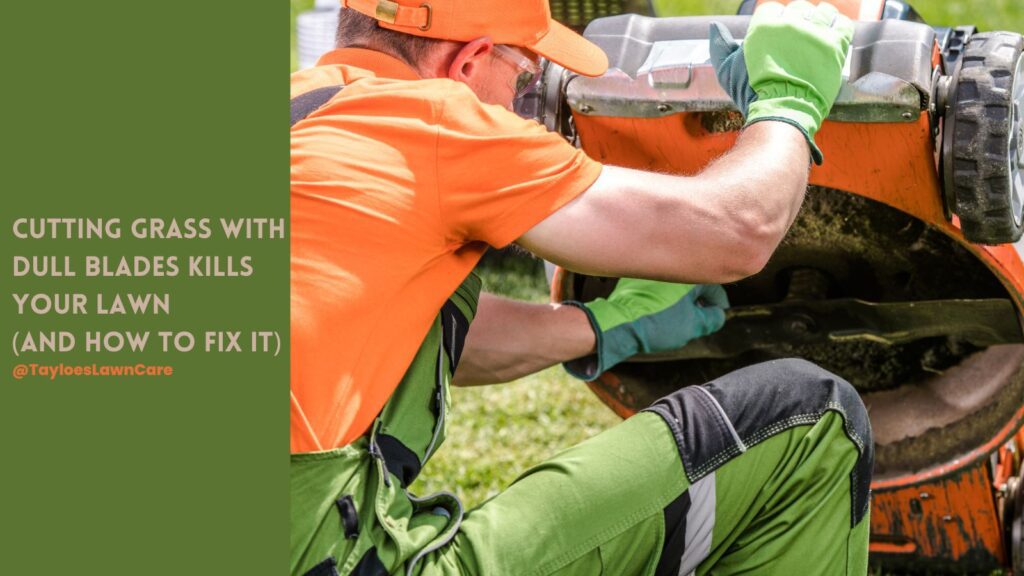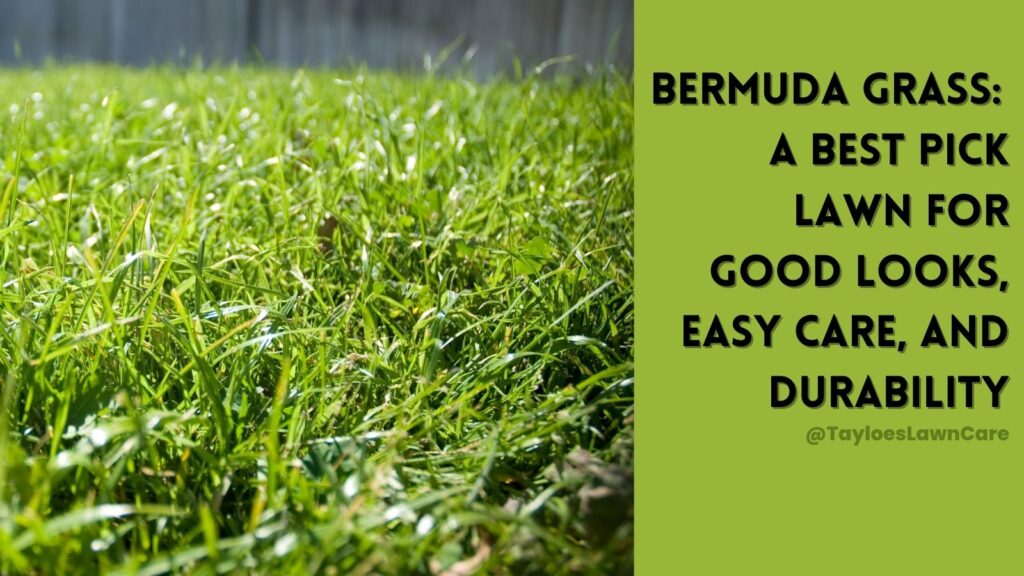Last Updated on: 8th November 2024, 06:59 am
Keep your yard storm-ready to make it more resistant to storm damage.
Living in northeastern North Carolina, we’re no strangers to the powerful winds and heavy rainfall accompanying hurricanes and tropical storms.
We all know that hurricane season starts in June every year, so it’s time to prepare. While most folks stash a couple of cases of water and gas for the generator, many don’t give long-term consideration of their yards and gardens a second thought.
Ok–we get it! So we can’t control the weather. But we can ensure our yards are better prepared for these events.
- In this article, you will learn:
- How to hurricane-proof your yard in USDA planting zones 7 and 8
- The sturdiest plants to resist the damage
- Tips to minimize damage and keep your property looking its best.
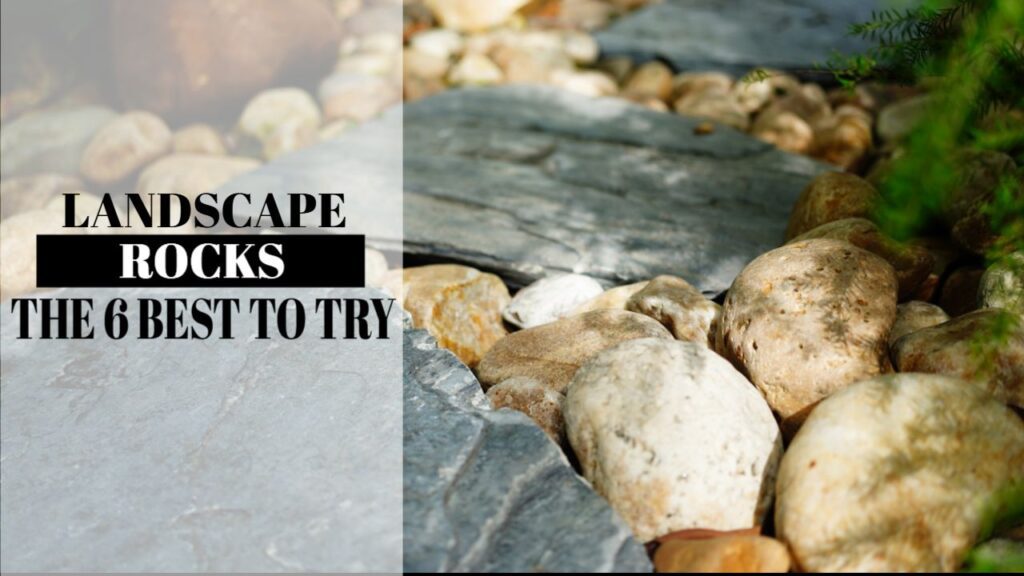
Choosing the Right Plants
One of the best ways to protect your yard from hurricane damage is to select native plants adapted to the local climate. Native plants often have deep root systems, which help them stay anchored during strong winds. Additionally, consider incorporating salt-tolerant plants into your landscape, especially if you live in the easternmost areas, near the brackish waters.
Deep-Rooted Plants:
- Live Oak (Quercus virginiana)
- Planting: Plant in well-draining soil during the dormant season (late fall to early spring). Space trees are at least 40-60 feet apart.
- Care: Apply mulch around the tree to retain moisture and prevent weeds. Prune dead or damaged branches regularly.
- Sunlight: Full sun to partial shade.
- Watering: Moderate; water deeply once a week during dry periods.
- Eastern Redbud (Cercis canadensis)
- Planting: Plant in well-draining soil during the dormant season. Space red bud trees 20-30 feet apart.
- Care: Apply mulch around the tree and prune to maintain its shape. Remove dead or damaged branches.
- Sunlight: Full sun to partial shade.
- Watering: Moderate. Water Eastern Redbud trees deeply once a week during dry periods.
- Bald Cypress (Taxodium distichum)
- Planting: Plant in moist, well-draining soil during the dormant season. Space trees 25-30 feet apart.
- Care: Apply mulch around the tree and prune to maintain its shape. Remove dead or damaged branches.
- Sunlight: Full sun.
- Watering: Moderate to high; water the bald cypress deeply once or twice a week during dry periods.
Saltwater Tolerant Plants:
We don’t generally worry about the salt tolerance of plants here in Bertie County. However, our neighbors to the east may live near brackish water to saltwater conditions. Here are a few good plants that can tolerate short periods of salt.
- Wax Myrtle (Myrica cerifera)
- Planting: Plant in well-draining soil during the dormant season. Space shrubs 6-10 feet apart.
- Care: Apply mulch around the shrub and prune to maintain its shape. Remove dead or damaged branches.
- Sunlight: Full sun to partial shade.
- Watering: Moderate; water the wax myrtle thoroughly twice weekly during dry periods.
- Sea Oats (Uniola paniculata)
- Planting: Plant in well-draining, sandy soil in late spring or early summer. Space plants 12-18 inches apart.
- Care: Apply mulch to retain moisture and prevent weeds. Trim back dead leaves in late winter.
- Sunlight: Full sun.
- Watering: Low, water deeply every two weeks during dry periods.
- Yaupon Holly (Ilex vomitoria)
- Planting: Plant in well-draining soil during the dormant season (late fall to early spring). Space shrubs 10-15 feet apart for privacy hedges or 20-25 feet apart for individual specimens.
- Care: Apply mulch around the shrub to retain moisture and prevent weeds. Prune to maintain its shape and remove dead or damaged branches. Yaupon Holly can be pruned into a tree form if desired.
- Sunlight: Full sun to partial shade.
- Watering: Moderate; water the Yaupon Holly deeply twice weekly during dry periods.
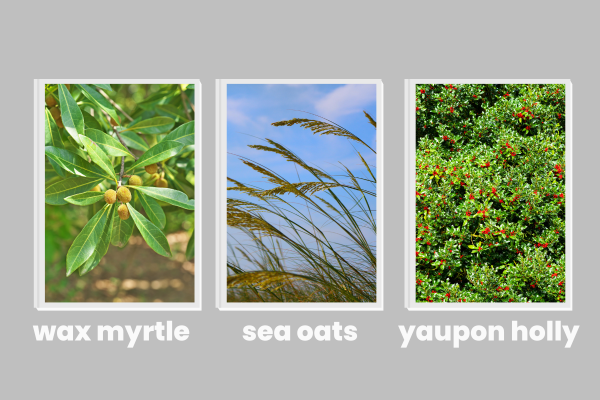
Proper Tree Maintenance Helps Hurricane-Proof Your Property’s Exterior
Trees can cause significant damage during a hurricane if not properly maintained. Regular pruning and tree care are essential to prevent broken branches from becoming projectiles. Remove dead or damaged limbs, and ensure trees are not too close to your home or other structures. If you’re unsure how to care for your trees properly, consult a professional arborist.
How to hurricane-proof your trees:
- Regular Pruning and Tree Care Proper pruning is essential for maintaining a tree’s structural integrity and overall health. Removing weak, dead, or damaged branches prevents them from becoming dangerous projectiles during a hurricane. Proper pruning also helps maintain a balanced canopy, reducing the risk of the tree toppling over during high winds. Having your trees professionally pruned every three to five years is generally recommended, though the frequency may vary depending on the tree species and specific circumstances.
- Monitoring Tree Health Regularly assessing the health of your trees can help you identify potential issues before they become hazards during a storm. Signs of a weakened or unhealthy tree include decaying wood, fungal growth, cracks in the trunk or branches, and pest infestations. If you notice any of these symptoms, it’s essential to consult an arborist for a thorough evaluation and recommendations on addressing the issue.
- Planting Trees at Safe Distances When planting new trees or assessing your existing landscape, it’s vital to ensure trees are not too close to your home or other structures. Generally, large trees should be planted at least 20-30 feet away from structures, while smaller trees can be planted 10-15 feet away. This will help minimize the risk of damage from falling branches or uprooted trees during a hurricane.
- Consulting a Professional Arborist If you are unsure how to care for your trees properly or have concerns about their stability during a hurricane, it’s always best to consult a professional arborist. They can assess your trees’ health, recommend appropriate pruning and maintenance measures, and advise on any necessary removals or relocations. Working with an arborist can provide peace of mind, knowing that your trees are well cared for and less likely to cause damage during a storm.
By taking these steps to maintain your trees, you can protect your property during a hurricane and ensure that your trees remain a beautiful and valuable asset to your landscape for years to come.
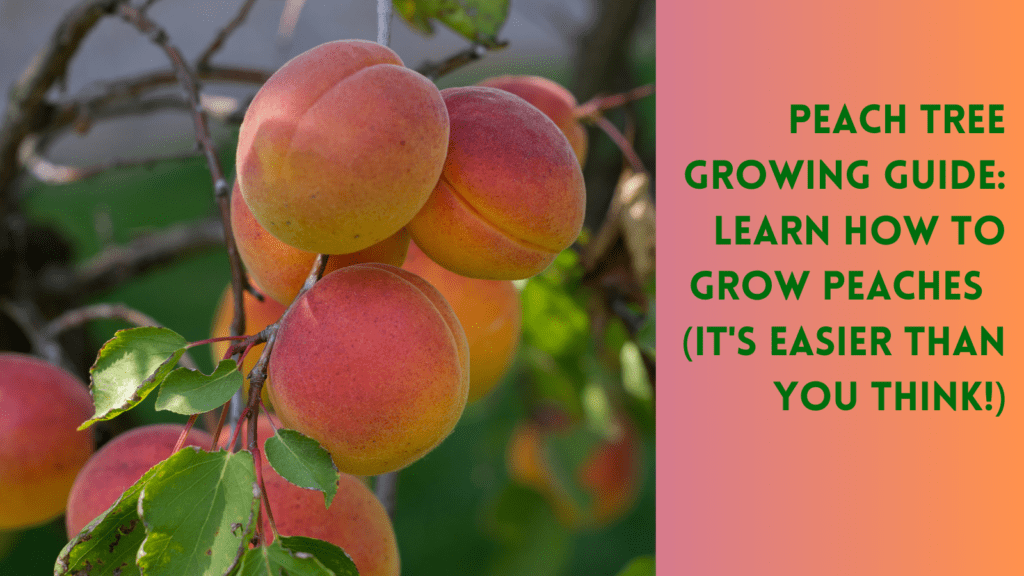
Lawn and Garden Care Can Actually Help Hurricane-Proof Your Yard
Your lawn and garden are important to you, as they enhance your yard’s beauty and provide a space for relaxation and enjoyment. With hurricane season a six-month threat in northeastern North Carolina, protecting your outdoor spaces from potential damage is essential.
Start by implementing a good lawn care strategy all season, securing garden elements, and reinforcing vulnerable areas. You can make your lawn and garden better prepared to weather the impacts of a hurricane or tropical storm.
- Mowing and Aerating Your Lawn. Maintaining a healthy lawn is essential to hurricane preparedness. Keep your grass at an appropriate height, generally between 2.5 and 3.5 inches, to promote strong root growth and prevent soil erosion. Additionally, consider aerating your lawn before the hurricane season to enhance root development and improve water infiltration, reducing the risk of flooding and standing water during a storm.
- Securing Garden Decor and Furnishings. Garden elements such as ornaments, potted plants, and trellises can become dangerous projectiles during a hurricane. Before a storm, secure these items by either bringing them indoors or anchoring them to the ground. For items that cannot be moved or secured, consider covering them with a tarp and weighing it down with sandbags or other heavy materials to minimize the risk of damage.
- Reinforcing Vulnerable Areas. If your garden is on a slope or flood-prone area, reinforce it and prevent soil erosion during a hurricane. Installing retaining walls, terracing the slope, or creating swales can help manage water flow and reduce erosion risk. Additionally, using groundcovers and mulching garden beds can help protect plant roots and further prevent soil loss.
- Installing Proper Drainage Systems. A well-designed drainage system is crucial for managing water runoff during a hurricane. French drains, swales, or dry creek beds can help direct water away from your home and garden, reducing the risk of flooding and erosion. Consult a professional landscaper or drainage specialist for the best drainage solutions for your property.
- Protecting Your Plants. Take measures to protect your plants from strong winds and heavy rainfall. For smaller plants and shrubs, consider installing windbreaks or temporary protective barriers. For larger plants and trees, ensure they are properly pruned and maintained to minimize the risk of broken branches and other damage. If a hurricane is imminent, you can apply a layer of compost or mulch around the base of your plants to provide additional protection and help retain moisture.
By taking these proactive steps to hurricane-proof your lawn and garden, you can minimize the risk of damage during a storm and ensure your outdoor spaces remain beautiful and functional for years to come.



The Takeaway: Hurricane-proof Your Yard Now; You’ll Have Less Rush When a Tropical Storm Comes
Hurricane-proofing your yard in northeastern North Carolina is essential to protecting your property and minimizing damage from storms. By choosing the right plants, maintaining your trees, and securing outdoor items, you can help ensure your yard is prepared for whatever Mother Nature throws our way.
If the inevitable happens and northeastern North Carolina faces a storm, Tayloe’s Lawn Care Services is here to help with post-storm cleanup. We are based in Aulander. But we also provide pressure washing and lawn care in Ahoskie and Windsor, NC. Please keep us in mind, and don’t hesitate to hire us for assistance with your mowing, mulching, or exterior washing needs.
Author Profile

- Deborah Tayloe is the CEO and co-founder of Tayloe's Lawn Care Services, LLC. She has a B.S.Ed and holds certificates in soil and water management and herbology from accredited programs.
Latest entries
 GardeningSeptember 27, 2025What perennials, shrubs, and trees don’t like fall pruning (and why)?
GardeningSeptember 27, 2025What perennials, shrubs, and trees don’t like fall pruning (and why)? Trees and ShrubsSeptember 14, 2025Fall Shrub Pruning Guide (September–October)
Trees and ShrubsSeptember 14, 2025Fall Shrub Pruning Guide (September–October) Trees and ShrubsApril 22, 2025Boxwood Blight: Early identification and isolation
Trees and ShrubsApril 22, 2025Boxwood Blight: Early identification and isolation Flower GardenApril 8, 2025John F. Kennedy Rose: Hybrid tea rose with elegant white blooms
Flower GardenApril 8, 2025John F. Kennedy Rose: Hybrid tea rose with elegant white blooms





